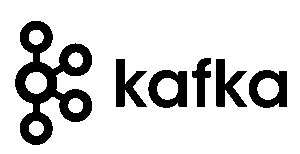If you’ve ever tried to stitch together a go-to-market tech stack, you know the drill: every vendor claims they’re “the missing link,” every tool swears it’ll “connect everything seamlessly,” and suddenly you’ve got more connectors than you know what to do with. The truth? Not all integrations are created equal.
Here’s where we land at Lane Four: middleware isn’t the hero of the story. It’s a tool, sometimes a great one and sometimes, it’s overkill. The real question is: what integration method actually fits your GTM architecture and growth goals? Sometimes you need the reliability of a secure, enterprise-grade platform-to-platform tool; other times, a lightweight connection will do just fine.
With that lens, here’s how we think about the integration landscape.
1. Data Cloud Driven
- Used For: Connecting systems where a Data Cloud Connector is available and Salesforce should serve as the system of truth AND reference.
- Example: Pulling product usage data from Snowflake and making it visible directly on the account.
When Salesforce is your north star for data, enabling Data Cloud keeps things clean and centralized.
2. Direct P2P (Apex)
- Used For: Lightweight, real-time processes where you don’t need heavy logging or error handling.
- Example: A “Get Inventory” button that calls out to a third-party database via Apex.
Fast, simple, and effective. Sometimes that’s all you need.
3. Consumer P2P
- Used For: No-code syncing between basic consumer-grade tools.
- Example: Sending HubSpot form submissions straight into Salesforce as leads.
You’ll most often encounter this connector option, as it’s typically built into many RevOps tools you already use. Just keep in mind that it may not cover all your needs once you scale into more complex, enterprise-level workflows.
5. Midmarket iPaaS
- Used For: Multi-system integrations with straightforward logging and error handling.
- Example: Syncing product-led trial conversions from your app to Salesforce and Stripe.
When you’ve got more moving parts but don’t need enterprise governance, this is the sweet spot.
6. Enterprise iPaaS
- Used For: Multi-market and high-governance environments.
- Example: Orchestrating data across Salesforce, ERP, and on-prem fulfillment systems.
This is where reliability, oversight, and auditability come first. Great for companies where integration failures aren’t just a headache, they’re a compliance risk.
When the cause of tools failing isn’t due to the product or the people administering them, it’s likely due to the way they’re connected. We’ve said it before, but it bears repeating: at Lane Four, we emphasize taking an architectural approach to every build; especially integrations. It’s the foundation for systems that perform reliably and scale with your business.
Whether that means considering a quick Apex callout, a robust iPaaS setup, or a fully orchestrated enterprise solution, we can help you figure out what’s actually right for your business. Because when your systems work, your teams can focus on what really matters: revenue, customers, and growth. Ready to look at what should be connected for your org, and how? Let’s chat!












